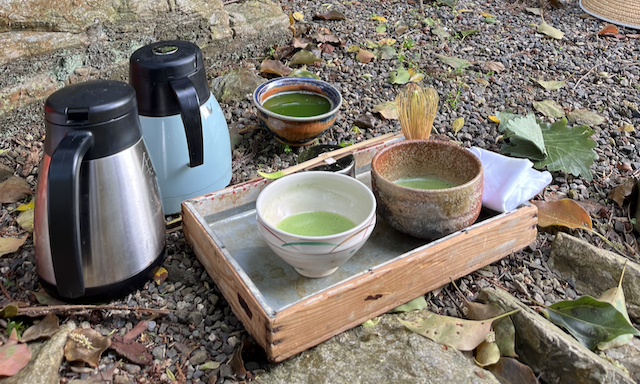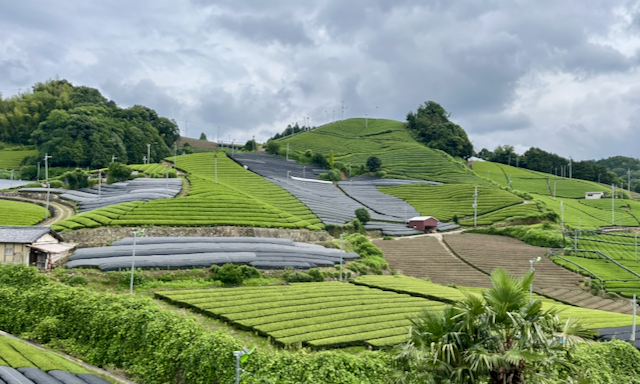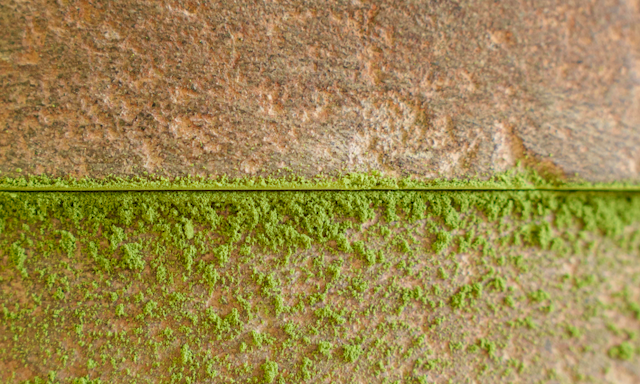The unfolding matcha situation
Stone-milled green tea, Japanese tea, powdered green tea, ceremonial tea… these are only some of the descriptions I have heard of matcha from its consumers, and its self-declared matcha ...

Stone-milled green tea, Japanese tea, powdered green tea, ceremonial tea… these are only some of the descriptions I have heard of matcha from its consumers, and its self-declared matcha addicts. Like any product with such a commoditized reach, mostly I see just general confusion on how matcha is made, its origins, and at a basic level, what matcha is. I see many contradictions in the general knowledge of its consumers most of the time.
One thing is clear, whether they are experts or not in matcha production and preparation, they just love the drink, either as a light or thick tea, but most commonly in a latte format. I entirely understand that, and it is really telling when I prepare some matcha for guests at work that they might have actually never drink better matcha. Setting aside the tea ceremony crew for a moment, if we put matcha in a good, better, best scale, most people have never left the average level. Typically, it is an entirely new and great experience for them. Moving away from their usual latte consumption, introducing them to a light serving of tea, which in its simplicity, is extreme sophistication, with just water and tea.
Most commonly, this experience comes back in a frequent question: where do I get good matcha? How can you assert its quality? Can I find this in my country? Generally, the answers are a universal: It depends, but it might prove difficult for you to find this in your country. While literally matcha brands are popping out every single day, the reality of it is that the quality is most times only average, with notable exceptions. Some shops not only have excellent sourcing, but they also grind their own matcha in-house. Or working closely with farmers year by year and building stronger, more resilient connections than that of a buyer-seller relationship.

Supply chain
Matcha is becoming a global drink at a fast pace; demand for it is soaring. Consumption is growing in almost all countries, and production struggling to keep up. Moreover, consider the restrictions in importing regulations, pesticide residue limits, and other compliances, which most brands or upcoming brands are not aware of. The need for those businesses to run a profitable operation adds to the pressure on the Japanese matcha supply chain. While consumers remain largely unaware of these challenges, supply chain issues only become apparent after something big happens.
Although the recent announcement of Marukyu Koyamaen has brought this issue to the forefront, it has been a coming problem for several years now. The surge in overseas consumption has prompted tea shops and cafés to seek affordable, high-quality ceremonial-grade tea for their customers. This demand is pushing tencha farmers, tencha factories, and tencha grinding facilities to their production limits.
Many farmers lack grinding equipment or tencha ovens. Consequently, most farmers rely on local tencha factories in their areas or belong to cooperatives that produce tencha in their region. These models have distinct advantages and disadvantages, which have been tested under the pressure of the ever-increasing demand for inexpensive and affordable tencha. Tencha factories typically operate continuously during the harvesting season, while grinding factories maintain the same pace throughout the year.

Tencha cultivation and processing
The rhythms of nature and some unique characteristics of growing tea plants for matcha don’t allow for significant and high-quality production changes. For instance, tencha and other shaded teas like Gyokuro and Kabuse require a lot more attention during the growing phase. The cultivation process involves meticulous application of shading, ensuring the correct timing and avoiding potential disruptions like windstorms that could damage the buds or open the shading cover. This is just one example of the growing differences that have to be considered. Let’s not even mention pruning, fertilization, or any particularities of the cultivar itself aside from the additional costs in labour, tools, and equipment to grow those teas.
In the next stage of production, there are the tencha factories, which operate continuously, steaming, drying, and separating the leaves and steams for Tencha and Kukicha. These factories are exceptionally costly to construct and maintain; among tea factories, they are a rare sight. Certain regions or prefectures specialize in producing a particular type of tea, leading to a higher presence of these factories. For instance, Kyoto Prefecture is home to numerous large, established, high-capacity facilities with their tea brands. These facilities often offer some of their capacity overhead to smaller farms, providing them with managed production space. Smaller farms can benefit from a well-run production process with skilled operators, eliminating the need for them to manage grinding equipment in addition to their usual farming responsibilities. As demand increases, these overheads are starting to be reduced, but production capacity at scale remains mostly unchanged.
The decision of these factories to reduce available spots for smaller clients has left farms scrambling to find alternative facilities to produce their goods. While it may encourage some farmers to establish their production facilities, I doubt it will be a widespread trend. The time to invest in the construction of a Tencha factory was a few years ago. Some farmers did, in several prefectures, I hope that it is paying off for those who took the courage to invest in one at that time. More likely, farmers will simply move on to another factory that may not have a brand identity and focuses solely on offering refining, blending, or grinding services, for instance. Even well established brands are struggling to keep their stocks at bay, as you can read from the Koyamaen announcement, so you can see how this affects the bigger picture. While restricting the quantity of products available feels only like a patched temporal solution, there is not much that can be done. Even with all the production capacity available, if there are no high-quality leaves available, there is not much that can be done.
Some regions might only have one of those facilities, which limits the leaf intake of that area. Consequently, this often prevents individual farmers from selling their products because they sell the leaves to that company at the price set for that regional factory. This creates a complex relationship between the factories and the farmers who collaborate with them. While some areas have excellent cooperation between farmers and factories, others do not. Occasionally, farmers may band together and establish their factories to gain control over their livelihoods. However, this practice is becoming less prevalent as fewer farmers are willing to undertake the challenging and physically demanding task of farming. The mere cost of equipment and the construction of a new tea factory can lead to substantial starting debt. Moreover, with farmers aging and a lack of young farmers entering the industry, both sides of the farming age spectrum are less inclined to undertake the challenge of establishing these factories from scratch.

A brief look into next year’s harvest
We are currently entering November, autumn harvest for tea, including autumn tencha is currently ongoing, at least in Wazuka. The upcoming harvest for spring teas will begin at the earliest in mid-April in Kyoto Prefecture, usually in late April or early May. Starting with sencha and other loose-leaf teas, then tencha a bit more in the middle of the season. Once the leaves are brought into the tencha factory, it takes a day or two to get the finished tencha back. Then it is commonly sold at auction, and the tea will begin a long trip down the Japanese tea supply chain. There is also the possibility a farmer has a contract with one of the tencha processing facilities, which makes the process more direct, a cooperative or a direct relationship with its customers, selling directly to consumers, for example. Thereafter, tencha is typically aged for a while, and we start seeing releases of great lots from around September to October. This means that an entire year from today, in theory, the quantity of restrictions would be lifted.
While I understand the measures in place and while others may have considered similar options, albeit less publicly, it appears that we are headed towards a market with limited stock options. Some renowned farmers will likely have already sold their spring production for the following year to both their direct customers and others. This will create a surge in demand for other farms within the quality spectrum, although not in the way you might think, and I would like to explore that idea further.

The human cost of matcha
All the median spectrum of producers is stretched to either produce more volume at the expense of a “ceremonial grade” experience. Or attempt to compete in a “competition-grade” market with significantly higher overhead costs, limited name recognition, and a substantial risk in some of those teas. An entire line of farmers is trying to navigate this market, and they are most commonly found by overseas customers who only tap them because their initial options fail to meet those accounts’ needs. This can be due to pricing or volume issues, or both. Sometimes, brands simply receive an overwhelming number of reach-outs from overseas customers seeking products. Those brands and farms can receive around 600 of such messages annually. Which is telling of the demand for matcha, it is also telling of the amount of new businesses showing up.
From there, both the farmers who sell product themselves are out to compete in a saturated market with minimal regulation. Factors like labeling terms, regional brand reputation if any, long-standing company names, or owning and operating your factories can give you a significant advantage. This includes award-winning farmers, highly sought after by both industry and consumers. In prefectures with a longstanding tradition of tencha and matcha production, like Kyoto prefectural brands like Ujicha or Uji Matcha, the prefectural tea brand. Together with private brands like Maryuku Koyamaen are perhaps the most renowned for their brand strength, consistently ranking as the first choice for clients overseas.
These names are sought after by customers who are often unfamiliar with the product. As the number of farmers who grow these leaves decrease, with falling prices and the retirement or closing of many farms after the COVID-19 pandemic, many areas have lost a lot of their capacity. At the same time, farms are getting bigger, with farmers usually taking over some other farmers' fields. Which is more work for the farmers, having to hire more people to help, which also has its shortage of workforce. The same happens with big “industrialized” farms, who lease the fields from farmers around the area or end up taking care of some fields on their own as well.
I tried to search for a term to describe that, and I have landed on an interesting one, I considered it to be inverse vertical integration first, and then found the definition of backwards integration. Which is, in my opinion, a great way to define part of the current trend for big farms. Before they would have contracted farms, or they will get leaves from farmers around the area. Now as scarcity of material seems to be rising and the number of farmers declining, big producing companies are moving toward leasing directly the fields of previous contracted farmers, essentially gaining control over their operations. There is also the case where they are gaining more land ownership too, although that is a bit more complex, due to some land regulations here in Japan it seems.
By integrating and essentially gaining control of all parts of the process, they gain full control of their production from the filed into the final product. These companies are already established, own tencha processing facilities, grinding facilities and have the level of skill for blending teas into great experiences. Essentially they operate the most expensive part of the stack both in machinery and also skill. Leaving some farmers with no many options in some areas to work with them, or try to navigate a currently difficult market, most times without a succession plan.
It seems to me that the market would become a race to the top, with customers seeking the highest matcha experiences, while simultaneously competing to the bottom to meet the demand for industrialized uses with summer or autumn leaves. Those products are commonly ground into more time-efficient methods, and appear unable to meet the demand for some customers, that demand high-volume, low-price stone-milled “ceremonial grade” tea. This demand is sometimes unreasonable, as most customers seek the product they can sell using terms like stone-milled, or ceremonial, but sometimes paying little attention to other aspects.

Brewing a matcha storm
As a farmer working on a small tea farm in Kyoto prefecture, we have seen an exponential demand for matcha, but the reality is that we, as an industry, are perhaps not ready for such a quick commoditization of matcha. It is putting pressure on the supply chain and the people behind it at all levels. Personally, I do not expect this to go away anytime soon; probably, it is going to become entrenched for a long time. Both until overseas demand declines or stabilizes, there is a sudden increase in production of matcha of great quality, not some patched up product, inside and outside of Japan, or somehow we manage to solve the big farming question: who will grow tea after us? There is a big world beyond matcha in Japan; perhaps this will be a helpful hand for the world to discover the rich tapestry of the other 95% of teas produced in Japan.
